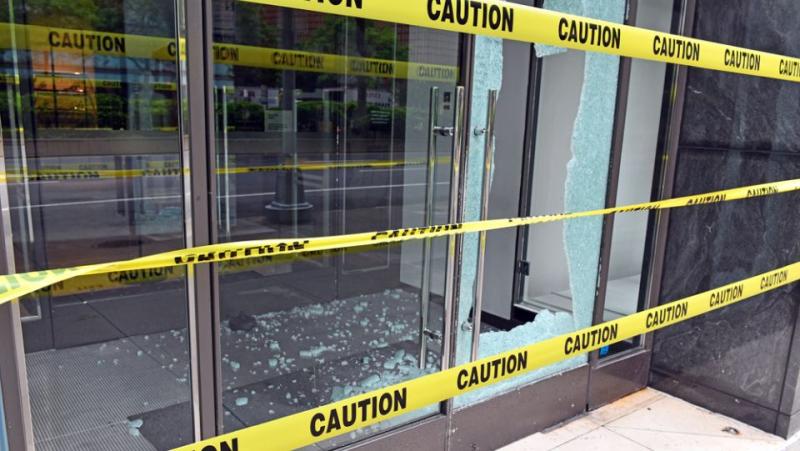Shrink and Retail Crime: Lowe’s, Macy’s, Dick’s, and More Discuss Problems and Solutions
On August 22, police began looking for suspects seen ransacking a Macy's store in Arcadia, CA. Investigators believe at least five suspects entered the store and made off with multiple boxed sets of perfume before running from the area, according to CBS News.
A day earlier, authorities said police in Portland, OR, arrested over two dozen people as part of a sting operation targeting retail thieves, The Washington Times reported.
Stories like these have become commonplace, and a huge problem as retailers seek out solutions — solutions that sometimes impact the customer experience. Tech like RFID, cameras, reporting tools, and analytics can help, but stores locking up merchandise is what tends to show up in gripes over impacted store experiences.
The issue of shrink remains paramount for retailers and includes more than just theft; waste, human error, inefficient processes, and supply chain issues can all account for total shrink. In 2022, retailer losses amounted to nearly $100 billion dollars, of which organized retail crime is a significant driver, the U.S. Chamber of Commerce reports.
The question of how much theft accounts for shrink looms large. This week Dick’s Sporting Goods revealed shrink represented a third of its merchandise margin decline and blamed organized retail crime.
“The biggest impact in terms of the surprise for Q2 primarily came from shrink,” CFO Navdeep Gupta said on the retailer’s earnings call. “We thought we had adequately reserved for it. However, the number of incidents and the organized retail crime impact came in significantly higher than we anticipated, and that impacted our Q2 results as well.”
The sporting goods retailer baked in elevated levels of shrink expectations for the back half of this year that further pressured its outlook for 2023. It reported Q2 2023 results that included a 23% drop in profit, despite sales that rose 3.6%. CNN reported shares of Dick’s plunged nearly 24% on the news.
“We'll have to wait and see when does this reverse, but right now we wanted to be conservative and we wanted to be prudent about the potential risk that may still be out there,” Gupta said.
President and CEO Lauren Hobart told analysts that shrink is an industry-level problem.
“It's a problem for our entire country, and it's something that we all need to work together on with our partners, with our trade organizations, and with our government honestly to continue to address the shrink issue. We've all seen the stories and it's quite alarming what's going on. So, yes, we believe we have appropriately reserved at this point. To Navdeep’s point, we've been conservative as we go into the back half, but we are going to fight to the extent we can to keep our teammates, our athletes, and our stores safe, and that's with increased security, with lockup cameras and working with local law enforcement and with our industry partners.”
Other retailers made similar remarks in recent August earnings calls. Walmart’s CEO Doug McMillon noted that while shrink is comprised of more than one thing, Walmart does think “that in some jurisdictions here in the U.S., there needs to be action taken to help protect people from crime, including theft. The other part of shrink is more controllable, and we stay focused on that as a priority.”
Macy’s COO and CFO Adrian Mitchell noted shortage continues to be a headwind, and the department store retailer is focused on a variety of mitigation strategies, including “testing the use of advanced technology, reporting, and tools; moving high-theft product away from entrances in stores; optimizing asset protection staffing to target high-risk areas; and collaborating with external parties to advocate for legislative change.”
Mitchell also noted Macy's added a June physical inventory count in certain categories with low RFID penetration.
“This helped us better understand shortage trends and informed our outlook and approach to receipt planning for the remainder of the year. The count did not materially change our annual assumption, but it did provide actuals for the categories counted in the second quarter. As a result, we adjusted our shortage accrual shifting a portion of the recognition out of the fourth quarter and into the second and third quarters.”
Home improvement retailer Lowe's Companies said shrink was in line with last year's results despite industry-wide challenges. This was driven by its “proactive customer service, tech-driven solutions, industry-leading asset protection program, and [its] penetration of rural stores,” according to EVP of stores Joseph McFarland. Some of Lowe’s tech-driven solutions include RFID.
“We're developing radio frequency identification, or RFID technology embedded in power tools to prevent theft. This solution will be largely invisible to customers, but it makes a tool inoperable until it is scanned and purchased,” he noted.
While the question of "how much of shrink is theft-related" may remain, retailers still have a responsibility to keep shoppers and employees safe no matter the level. Technology such as RFID, edible microchips, facial recognition, and artificial intelligence seeks to power solutions, as the issue continues.



